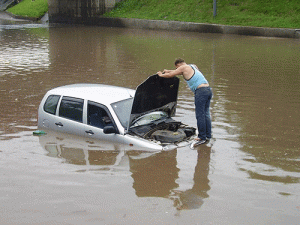 Planning is quite possibly the single most important aspect to prepping, yet so many preppers fail to plan at all. Instead, many choose to prepare for the worst by buying supplies and collecting weapons when they would be much better suited with some good old-fashioned planning.
Planning is quite possibly the single most important aspect to prepping, yet so many preppers fail to plan at all. Instead, many choose to prepare for the worst by buying supplies and collecting weapons when they would be much better suited with some good old-fashioned planning.
Survival planning is so important. In fact, the U.S. Army Survival Manual has this to say about it:
“Survival planning is nothing more than realizing something could happen that would put you in a survival situation and, with that in mind, taking steps to increase your chances of survival.”
In other words, planning should be a synonym for prepping. Seeing a potential issue and taking steps to mitigate the potential effects of said issue is what prepping should be about.
There are some key items I want you to keep in mind when to adding some planning to your preps. All it takes is a little, well, planning.
Less Stress
Before even getting into planning, it’s a good idea to look at the most important benefit to planning: less stress.
Everyone knows that stress isn’t good for you, and while stress can indeed help you out at times, keeping stress to a minimum when in a survival situation is a very good idea. Planning helps keep stress as low as possible and allows for situational stress to have its place.
Planning is important because it helps you remember necessary items and steps. Above that, having a plan for how you’ll find water and where you’ll go in case of an emergency are great, but you should have a plan written down for home defense, food storage, and possible escape routes.
The more you plan now, the less stress you’ll experience when the plans are put into action. Remember that this planning starts with basics like food but goes as far as keeping your car’s gas tank filled all the time and knowing where exits are in any public place in case of disaster.
Types of Planning
There are three major types of planning; each requires its own solutions, emergency kits, and timelines.
- Food and Water
- Escape
- Long-term Survival
First, you need to plan your emergency food/water storage and sourcing. No matter the location or survival kit type, emergency food storage and water storage is one of your top priorities. Assume you won’t be able to find food or water and plan accordingly. Remember this includes what you can store as well as where you’ll be able to find water long-term.
Next, you need to have an escape plan for each location you spend a large amount of time in — home, work, your parent’s house, even the grocery store. Each place will have its own obstacles and issues to deal with if disaster strikes while you’re there.
Finally, you need to have your long-term survival plan. Once things settle down and you have a better idea of what to expect from the world, long-term survival begins. You need to be prepared for this, which means learning off-grid skills like bushcraft, canning, hunting, fishing, and anything else that can replace goods and services that will ultimately disappear.
Putting Your Plan into Action
Each of these smaller types of planning all come together into your very own prepping plan. When the SHTF and it’s time to start acting, take a moment and realize which plan you’re following. Knowing if you’re dealing with food and water, escape, or long-term survival will help you know how to act and what supplies to use. By narrowing down your activities to a specific plan, you can avoid stress and overstimulation
The food and water plan starts immediately. If you understand that a disaster struck, your first course of action should be to secure as much food and water as possible. Fill your bathtub with tap water as well as your sinks and any clean bottles you have. That service will shut off soon or become contaminated, so any additional water will help. If you have a grocery store nearby, go clean them out of food and supplies. You should already have emergency food storage and water ready for this, but this is the last push, so every bit helps.
By paying attention you know when to enact the escape plan. This means it’s time to use your survival kit and your bug-out bag to get home or just to hunker down for the first 72 hours.
Finally, you need to know when escape turns into long-term survival. You don’t want to stay in escape mode any longer than you have to. Escape mode causes stress and usually comes with sleep deprivation as you’re always “on” while escaping. Moving into long-term survival mode should mean things are slightly calmer.
Wrap-Up
You can’t plan for everything, and trying to will drive you insane. Break your prepping down into the three major types of planning listed above and add your own specific planning items to their categories, making sure to pay attention when each one starts to come into play.
Once you’re good with these, phase two of planning involves more detailed plans like self-defense, home security, and bartering. But if you can’t get the basics of survival planning down, those won’t do you much good for long. Get started on the basics today and hone those planning skills while it’s still easy to do so.
